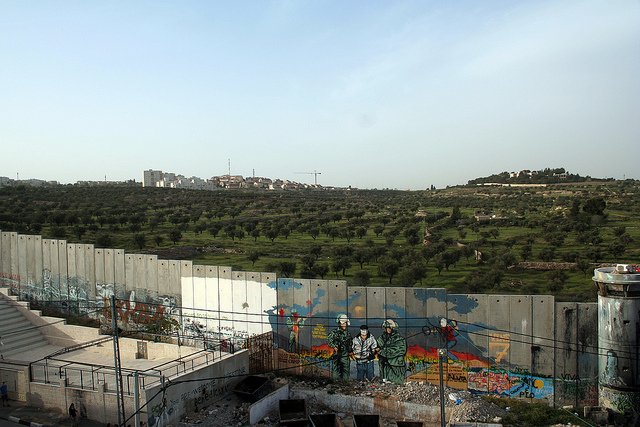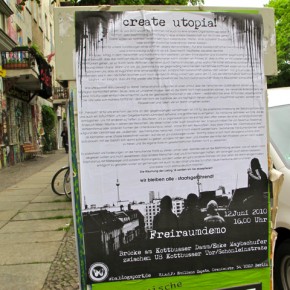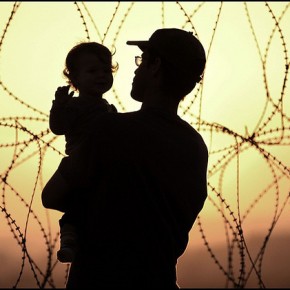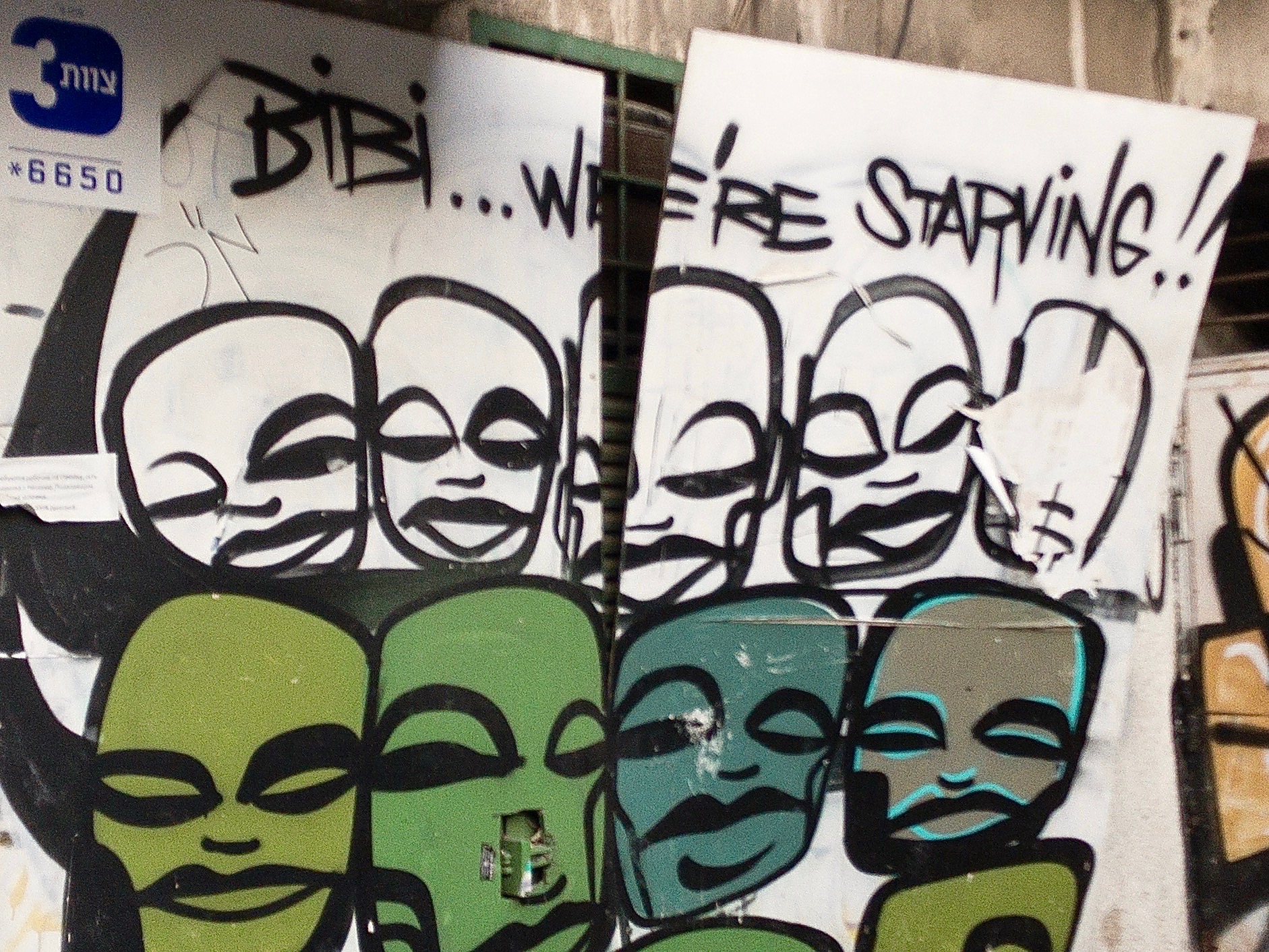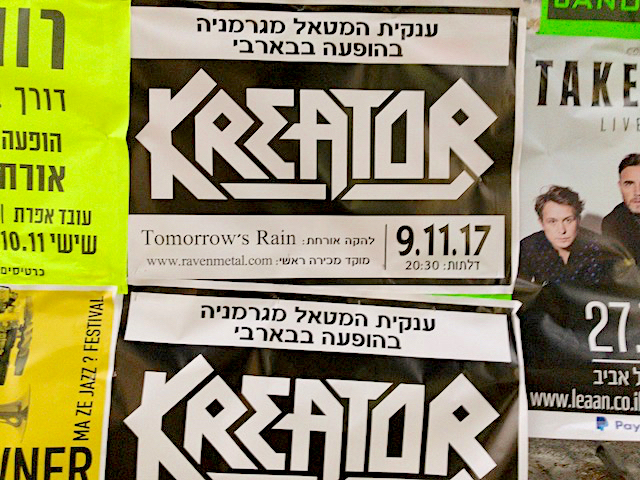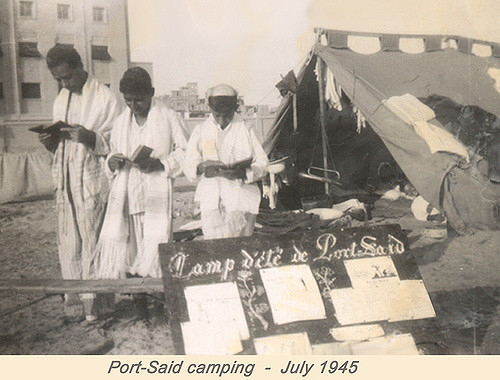Documentaries featured prominently at this year’s Jerusalem Film Festival. The two award winners, Emad Burnat and Guy Davidi’s Five Broken Cameras, and Ran Tal’s The Garden of Eden, were decidedly deserving. Similarly contending with the Palestinian-Israeli conflict, they could not be more different. Not just in terms of perspective, but in the correspondence between their respective production values, and their subject matter.
Five Broken Cameras starts in 2005, days after Burnat’s fourth son is born, when he receives a camera and begins to film his family. That year also marks the first protest against the construction of the Separation Wall, which does not merely separate the villagers of Bil’in from Israel “proper,” but also from some 30% of their agricultural land. Burnat thus becomes his village’s house protest cameraman, documenting the struggle from its inception.
Holding his camera, Burnat quickly discovers, both shields and endangers the cameraman. On the one hand, it provides him with the privileges of a reporter, seemingly protected from the violence that he records. On the other hand, the Israeli army, in its endeavors to suppress the protest, repeatedly targets his camera (as well as the cameras of other reporters and filmmakers.) Indeed, the Israeli government’s claims that it cherishes the freedom of the press and the rule of law notwithstanding, Burnat learns the hard way that the army and settlers are colluding not only to rob Palestinians of their land, but to prevent them from documenting the robbery. One camera after another are smashed by soldiers, as Burnat continues to cover the demonstrations.
Five Broken Cameras adds little to the library of films documenting non-violent protests against the Separation Wall, and the alliance these demonstrations have engendered between Palestinian, Jewish Israeli, and international activists. Some of Burnat’s footage has even appeared in reports and documentaries of other filmmakers. Indeed, the “basic” even “crude” filmmaking of Five Broken Cameras—not surprising fact given Burnat’s lack of training and experience—pales in comparison with films such as Bil’in Habibti (2006) and Budrus (2009.) Though its coarseness does not detract from the power of the story it recounts (and the rage and exasperation it stirs,) it still begs the question—begged by most films on the Israeli-Palestinian conflict—why should we watch this one?
Where Five Broken Cameras differs from its predecessors is that it provides a Palestinian account of the protests. Indeed, it is startling to consider how few Palestinian-made documentaries there are covering the Palestinian non-violent resistance movement. Five Broken Cameras is among the very first to broach the subject. Does the Palestinian perspective differ from the Israeli or the international perspective of the struggle? Does it matter who holds the camera? According to this documentary, it does.
The homemade, DIY quality of Five Broken Cameras is an enormous asset. It serves to underscore the fact that the stakes for the local villagers are much higher than it is for outside activists protesting in solidarity with them. It serves to suggest that filmmaking itself is part and parcel of the Palestinian protest, a position shared by many filmmakers. It also suggests that unlike Israeli and international filmmakers, Burnat is not at liberty to take his film elsewhere, away from the protest, in order to polish and refine it for wide release. It is filmmaking immersed, inextricably so, in the struggle. This serves to authenticate Burnat’s voice as a voice, ironically, rarely heard – that of the Palestinian protesters.
Ran Tal’s The Garden of Eden, which earned Tal the Best Director of a Documentary Film Award is, a vastly different film. Tal spent a year at Gan ha-Shlosha National Park, located near Beit She’an, one of Israel’s most popular parks. Not so much an account of the history of the park and its architecture, The Garden of Eden is an increasingly rare meditation on the possibility of co-existence. For Tal, the park provides a space where all walks of life and all sectors of Israeli society can peacefully, if not lovingly, intersect: elderly kibbutz members, Mizrahi youth from development towns, Israeli-Palestinian youths, immigrants from the former Soviet Union, Ultra-Orthodox families, international Christian tourists and more.
Ironically, park authorities appear to be somewhat dissatisfied with this situation. In a meeting of those in charge of the park, they complain that Gan ha-Shlosha is “notorious” for being a favorable spot for Israeli-Palestinians. Subsequently, the authorities endeavor to devise a strategy to change its image to convince Jewish-Israelis that the park is indeed Israeli, that is, Jewish-Israeli to the exclusion of Palestinians. Though Tal does not provide commentary in the film, it is clear that the real threat he perceives for the park is not the presence of Palestinian visitors but, rather, the attempt to claim it for an exclusive Israeli-Zionist history.
Tal’s cinematography is particularly striking. It underscores the beauty of the park, an Israeli Garden of Eden, of sorts, for all the Biblical metaphors this suggests. Tal’s prime subject is not, however, the man-made nature of the park, but the visitors who frequent it and the workers who are in charge of maintaining it.
The film is, by and large, a compilation of interviews Tal held with them: a middle-aged cashier who recently divorced her abusive husband; a young Palestinian who was forced by his family to give up his relationship with a Russian-Jewish immigrant; a young Ukrainian immigrant who followed her father to Israel only to discover that he disavows her; a man who was wounded in a car crash on the eve of the 1973 “Yom Kippur” War, and so missed the war in which he lost a brother, a cousin and many of his friends; an elderly man who saw his son crashes to death in a hang gliding accident, and more.
Ran Tal’s Garden of Eden is a place of loss, and a space for reflection over that loss. It is a place where visitors can openly discuss their pain without being overwhelmed by it, without overwhelming the audience either.
As in his earlier, award-winning 2007 film Children of the Sun, Tal plays with the relationship between sound and image. Whereas his frames present show people swimming, wading or lying in the water, the soundtrack plays the interviews. In at least one place in the film the director makes clear—by switching from one silent person to another—that it is impossible to pin down sound to sight, or voice to a human figure. The question always lingers: are the voices we are hearing of the people we are watching? Between disembodied voices and voiceless human bodies, the park appears ironically ever more ghostly. Less of its place and time but also, quite paradoxically, more universal.
More than an elegy for the broken dreams of co-existence in Israel/Palestine, Garden of Eden mourns for something much more personal and, therefore, much more universal: Tal’s interviewees all seem to mourn for their families: for the death of parents or spouses or children, for the betrayal by spouses, for a failure to make a family. “Happy families are all alike; every unhappy family is unhappy in its own way,” so opens Tolstoy his great novel Anna Karenina. This, so it seems to me, is what hangs over the gate of Tal’s Garden of Eden.
Photograph courtesy of discorunt. Published under a Creative Commons license.
